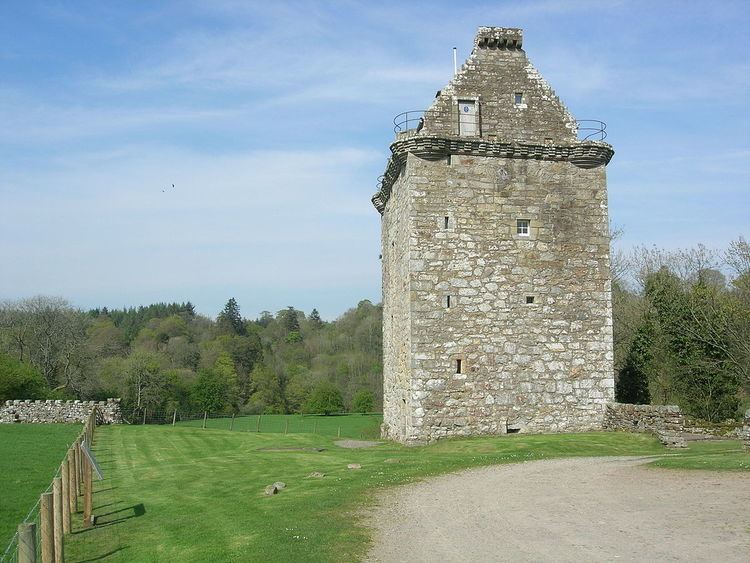Owner Private Condition Restored 1978–80 | Open tothe public No Materials Cream sandstone | |
 | ||
Type Oblong plan Tower house Height 38 feet (parapet); 44 feet (beacon of south gable) Similar Hermitage Castle, Orchardton Tower, Drumcoltran Tower, Repentance Tower, Clan Armstrong Centre | ||
Gilnockie tower scottish borders
Gilnockie Tower is a 16th-century tower house, located at the hamlet of Hollows, 2.3 km north of Canonbie, in Dumfries and Galloway, south-west Scotland. The tower is situated on the west bank of the River Esk. It was originally known as Hollows Tower. Gilnockie Castle is a separate, but nearby site.
Contents
- Gilnockie tower scottish borders
- View from gilnockie tower scottish borders
- History
- Restoration
- The tower
- Gilnockie Castle
- References
View from gilnockie tower scottish borders
History
Hollows was built around 1520 by Johnnie Armstrong, famous Border outlaw and younger brother of Thomas Armstrong of Mangerton. In 1528, the tower was burned by Sir Christopher Dacre, English Warden of the Western Marches, and in 1530 Johnnie and 50 followers were hanged by James V, after being tricked into joining a hunting party, an event recorded in the ballad "Johnnie Armstrong".
The tower was rebuilt, but was damaged again by English raids in the 1540s, only to be rebuilt again with a new parapet walk, and a beacon stance on the gable.
Restoration
In 1978, the tower was a roofless ruin, when it was bought by Major T.C.R. Armstrong-Wilson, who undertook a full restoration. It was re-roofed, and floors were reconstructed at four levels. Authentic oak doors were fitted to all rooms. The interior was plastered out, and electricity and water taken into the building. The tower is a Category A listed building, and all work was carried out in consultation with the Scottish Development Department (Ancient Monuments). The tower now houses the Clan Armstrong centre.
The tower
Gilnockie Tower is a simple rubble-built tower house of four storeys plus an attic, measuring around 10 by 7.6 metres at the base. The basement comprises a vaulted cellar, with gun loops to south, west and north. A spiral stair in the south-west corner leads up to the first floor, devoted to a hall. Above this are two further rooms, with the attic space above between the crow-stepped gables. At the top of the wall, corbels show the presence of a parapet walk, although this does not survive. A notable feature is the beacon stance, corbelled out from the south gable at the highest point of the building.
The oldest part of the tower is thought to be the large stone by the doorway into the basement. Carvings of spirals and a key-like symbol are believed to date from the 2nd millennium BC, with the slab having been reused in the building. The stone is thought to have originated from near Langholm.
Gilnockie Castle
The site now known as Gilnockie Castle lies near Canonbie at the east end of Gilnockie Bridge, which crosses the Esk in Hollows, just 500 m to the south east (NY386782). Today, only an earthwork remains, and there is some doubt as to whether a tower stood there, although it is possible that the earlier tower destroyed in 1528 was located there. It is associated with Johnnie Armstrong, Laird of Gilnockie.
